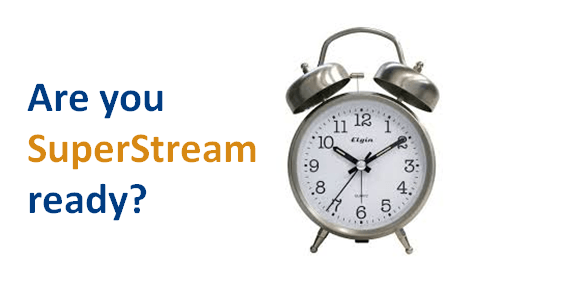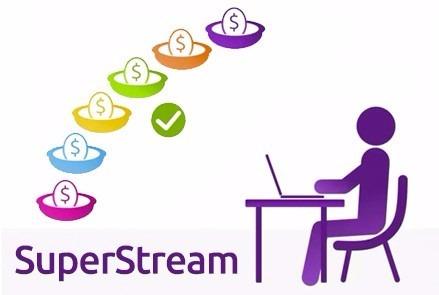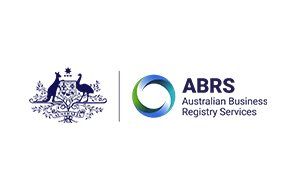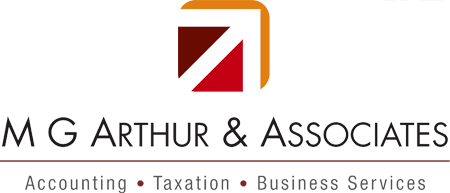SuperStream - what, how and when....
This article aims to bring together some key information to help you, our clients and readers, to understand your obligations under the new SuperStream regime.

| TIP ! This also means that ATO will have real time data about super paid by employers to employees. Delayed payments or non payments would thus be picked up easily resulting in possible ATO audits! |
How does SuperStream affect employer super contribution?
- Employers must make superannuation contribution by submitting payments and data electronically (to a superfund) in accordance with the standard.
- All superannuation funds (including SMSFs) must receive contributions from employers electronically in accordance with the Standard.
Note: The new Standard does not apply to employers who contributes to a SMSF to which the employer is related.
When does SuperStream starts?
| Employers | Applicable from | Must comply by
|
| Small Employer with 19 or fewer employees | 1 July 2015 | 30 June 2016 |
| Medium to Large Employers with 20 or more employees | 1 July 2014 | 30 June 2015 |
| TIP! If you have 7 full time employees and 15 casual workers on 1 July 2014, you would be classified as a Medium sized employer as you have a total of 22 employees. Therefore, your SuperStream obligations have started from 1 July 2014 and you have till 30 June 2015 to meet all the requirements. |

| Payment Standard
|
Registration Message |
| Payment Standard stipulates the payment methods must be used by employers and superannuation entities when making or receiving contribution.
Following are the electronic payment methods that can be used; a) The Bulk Electronic Clearing System Direct Entry System (BECS DE) maintained by the Australian Payment Clearing Association b) BPAY c) Alternative electronic payment method which complies with the Standard |
Contribution Message Implementation Guide states the payment message must consist of a minimum set of data about each contribution, which is sent by the employer when the contribution is made, including the following ;
a) Employer details; b) Employee details, i.e. the superannuation fund's members details – eg the employee's name, residential address, TFN and telephone number; c) Contribution types and amounts and d) Payment details, including a unique payment reference number |
Click here to view the 'Data and Payment Standards – Payment Methods' and the the 'Data and Payment Standards – Contributions Message Implementation Guide (Contribution MIG)' relating to the above.
In order for SMSF trustees to meet their obligation in respect of contributions messages, an SMSF member's employer would need to be provided with the following information ;
a) The SMSF's Australian Business Number (ABN) which is used as an identifier to ensure the data messages reach the correct fund
b) Bank account details
c) An electronic service delivery address (ESA) for the receipt of the contribution data message, in order to receive data messages associated with employer contributions in the SuperStream format.
| TIP!
In short, all you need to do is, get an ESA and provide the same, along with above details to employer of your members.
TIP! To assist SMSF trustees in obtaining an electronic service address, the ATO has published a register of messaging providers. You may also want to check with your current bank if they provide an ESA TIP! Contributions sent to an SMSF from a related party employer are exempt and can be made using existing processes, including cheques or direct bank transfers. |
What happens if employers don't comply?
Trustees of superannuation funds (including SMSFs) and employers are required to comply with the Standard to the extent that is applies to them. Failure to comply may results in an administrative penalty being imposed on the trustee of an SMSF or an employer. Not to mention, lack of information flow to ATO may result in unnecessary ATO audits.
| Employer Action | Related SMSF | Unrelated SMSF | Bank / Industry Fund (eg. Hesta, AMP, etc) |
| Superannuation guarantee contribution | This contribution does not need to comply with SuperStream | Must comply | Must comply |
| Salary sacrificed superannuation contribution
|
This contribution does not need to comply with SuperStream | Must comply | Must comply |
| Contribution by cheque | Allowed | Not allowed | Not allowed |
| In specie contributions | Allowed | Not allowed | Not allowed |
| Electronic contribution messaging | This contribution does not need to comply with SuperStream | Must comply | Must comply |

| Tip! If you are already spending hours paying super each quarter and feel further burdened by this change, consider using a Superannuation Clearing House. ATO provides free service for small employers. Click here to find out. |







